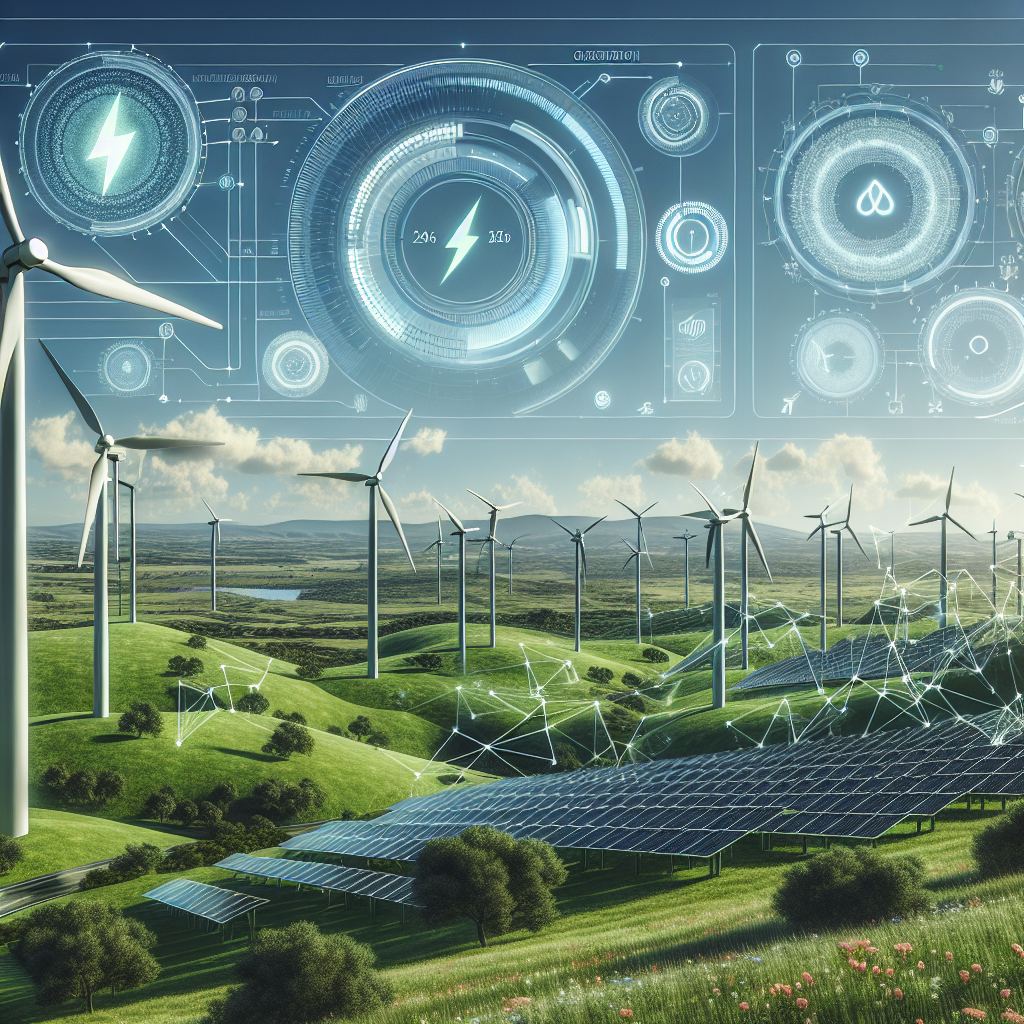In recent years, there has been a growing interest in using machine learning techniques to enhance energy resilience in renewable energy systems. With the increasing demand for clean and sustainable energy sources, renewable energy systems such as solar, wind, and hydroelectric power have become more prevalent. However, these systems are often affected by factors such as weather fluctuations and grid instability, which can lead to disruptions in energy supply. By leveraging machine learning algorithms, researchers and engineers are able to optimize the performance of renewable energy systems and improve their resilience to external factors.
Machine learning is a branch of artificial intelligence that enables computers to learn from data and make predictions or decisions without being explicitly programmed. In the context of renewable energy systems, machine learning algorithms can analyze vast amounts of data, such as weather patterns, energy production, and grid performance, to identify patterns and make informed decisions in real-time. This allows for better management of energy resources, improved forecasting of energy production, and increased efficiency in energy distribution.
One of the key applications of machine learning in renewable energy systems is predictive maintenance. By analyzing data from sensors and monitoring equipment, machine learning algorithms can predict when components of a renewable energy system are likely to fail and schedule maintenance before a breakdown occurs. This proactive approach not only reduces downtime and maintenance costs but also improves the overall reliability of the system.
Another important application of machine learning in renewable energy systems is energy forecasting. By analyzing historical data on energy production and consumption, as well as weather patterns, machine learning algorithms can predict how much energy will be generated by renewable sources in the future. This information can be used to optimize energy storage, schedule energy distribution, and minimize grid congestion. By accurately forecasting energy production, renewable energy systems can operate more efficiently and reliably, reducing the reliance on traditional fossil fuel sources.
Machine learning can also be used to optimize the performance of individual components within a renewable energy system. For example, algorithms can adjust the angle of solar panels or the pitch of wind turbines based on real-time data to maximize energy production. By continuously analyzing data and making adjustments, machine learning algorithms can improve the efficiency of renewable energy systems and increase their resilience to external factors.
In addition to optimizing energy production and distribution, machine learning can also be used to enhance the cybersecurity of renewable energy systems. As these systems become more interconnected and rely on digital communication networks, they are increasingly vulnerable to cyber attacks. Machine learning algorithms can analyze network traffic, detect anomalies, and identify potential security threats in real-time. By continuously monitoring the system and responding to cyber threats, machine learning can help protect renewable energy systems from malicious attacks and ensure the security of energy supply.
Overall, the integration of machine learning techniques into renewable energy systems offers numerous benefits, including improved energy efficiency, enhanced resilience, and increased sustainability. By leveraging the power of data analytics and artificial intelligence, engineers and researchers can optimize the performance of renewable energy systems and accelerate the transition to a clean energy future.
FAQs:
1. How does machine learning improve energy resilience in renewable energy systems?
Machine learning algorithms analyze vast amounts of data, such as weather patterns, energy production, and grid performance, to identify patterns and make informed decisions in real-time. This allows for better management of energy resources, improved forecasting of energy production, and increased efficiency in energy distribution, ultimately enhancing the resilience of renewable energy systems.
2. What are some key applications of machine learning in renewable energy systems?
Some key applications of machine learning in renewable energy systems include predictive maintenance, energy forecasting, optimization of individual components, and cybersecurity. Machine learning algorithms can predict when components are likely to fail, forecast energy production, optimize the performance of solar panels and wind turbines, and enhance the cybersecurity of renewable energy systems.
3. How does machine learning contribute to the sustainability of renewable energy systems?
By optimizing energy production and distribution, improving efficiency, and enhancing resilience, machine learning contributes to the sustainability of renewable energy systems. By reducing downtime, maintenance costs, and reliance on fossil fuels, machine learning helps accelerate the transition to a clean energy future and mitigate the impacts of climate change.

